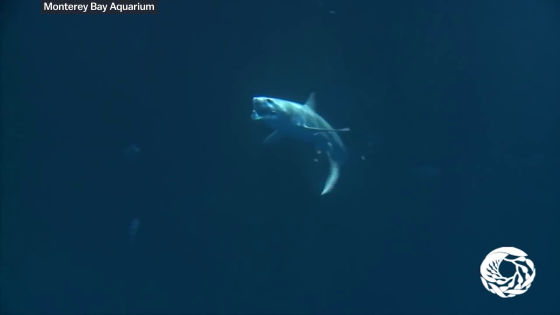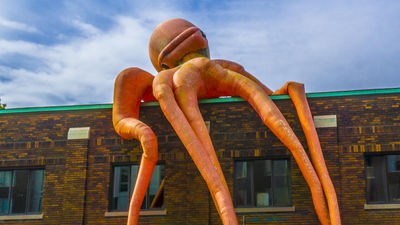Why are there no aquariums exhibiting Hojo sharks?

ByElias Levy
Various water living creatures are bred and displayed in the aquarium, but the aquarium where you can see Hojo shark is not the current article creation. Vox is closing on its simple question as to why the Hokkaido shark who became a model of the movie "Jaws" and knows many people are not bred at the aquarium.
Why no aquarium has a great white shark - YouTube
Many kinds of sharks are bred in the aquarium, such as a mustard shark and a shark shark, but there are no aquariums in which the white shark is raised.

Many aquariums around the world have challenged the rearing of the white shark during the period from 1970 to the 1990's, but problems such as not eating the food or getting out of swimming occurred, followed by a pair of white sharks that died soon after the start of breeding.

In the record of the American aquarium, until the 1990 's, it could only live up to 16 days at the maximum.

Montrey Bay Aquarium has succeeded in rearing the Rhododendron shark for about 6 months in 2004, hoping to reap the hokkaido shark that is said to be impossible. According to John Hochi of Monterey Bay Aquarium, where other aquariums continued to fail, according to John Hochi of the Monterey Bay Aquarium, the first aquarium to undertake was the development of a tank rather than the capture of the white shark.

The Monterey Bay Aquarium made about 10 meters in height and can contain about 3.8 million liters of water in the aquarium where you can keep tuna and sharks inhabiting the ocean.

In addition, the Monterey Bay Aquarium captures only 4 foot 4 inches (about 1.6 m) or less of Hokkaido sharks as target of breeding, among the Hojo shark sharks which are also 15 ft. (About 4.5 m or more) in average.

The reason why it was limited to a small white shark, because the hokkaido shark grows like eating large mammals such as sea lions and fur seals, it becomes difficult to rear. The small domestic shark, which is within 1 year after birth, mainly eats fish, so the difficulty of breeding decreases for the aquarium.

The Monterey Bay Aquarium did not immediately transport the hojo sharks captured for breeding to the aquarium, but temporarily made a big enclosure in the ocean and kept it there for a while. After having temporarily kept it in the sea, I confirmed the safety on breeding, such as whether to eat food properly, and then moved it to the aquarium.

Hokkaido shark breathes in the same way as other fish. In sharks there are individuals who can breathe even if they do not swim, but hojo sharks always continue to swim and drink with difficulty breathing if seawater is not passed through the eye.

Therefore, the hokkaido shark captured by the net etc. starts to weaken immediately after capturing.

In order to solve this problem, the Monterey Bay Aquarium has created a specialized moving aquarium. The tank was transported for 9 to 11 hours without hurting the shark's eye shark, so it was said that it was equipped with all kinds of functions such as video camera and oxygen sensor.

Thanks to a carefully planned plan, the Monterey Bay Aquarium succeeded in exhibiting Hokkaido sharks. During the exhibition, it seems that the number of customers has increased by about 30% compared to usual times.

However, about 6 months after the start of breeding, Monterey Bay Aquarium decided to return the reared bear shark to the sea on the ground that it "harmed other sharks."

After that the Monterey Bay Aquarium continued to challenge the rearing of the white shark and succeeded three times in breeding for more than 100 days.

But there are failures behind success. A white shark who swims the open ocean at a quick speed has encountered an example where it hits the wall of a fish tank when breeding in a tank. As a result, the Whitehead shark has damaged the nose part, it seems that there were also Whitehead sharks that ceased breeding due to this and returned to the sea.

At the end of 2011, Monterey Bay Aquarium does not breed and capture the Whitehead shark at all.

The reason why I ended the exhibition of white-tailed sharks was that I achieved the original purpose of "showing the living bearish shark to the customer".

In Japan, the Churaumi Aquarium of Okinawa began exhibiting a white shark of about 3.5 m in size from January 5, 2016 ... ...

He died on January 8, only three days later.

Related Posts:







